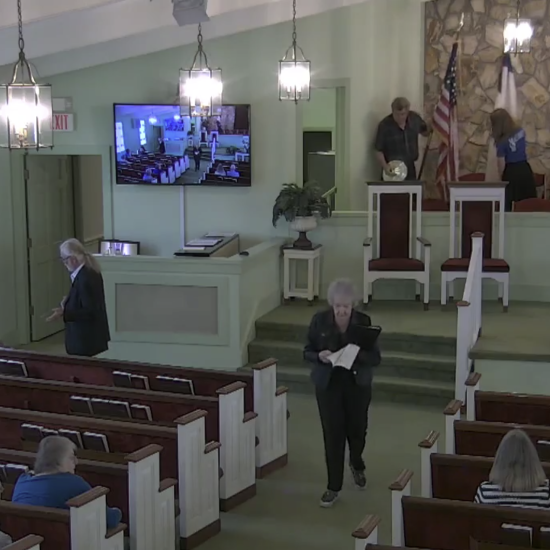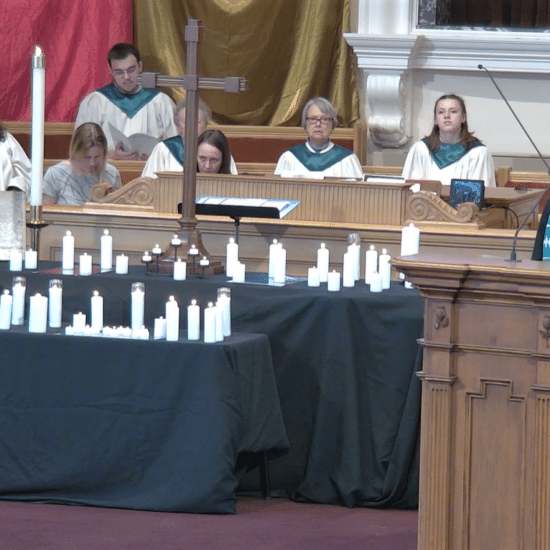The Baptist movement began 400 years ago with the self-baptism of John Smyth, but the roots of immersion lie beyond that first gathered community whose mode was affusion, or pouring. Edward Barber was probably the first to embrace believer’s baptism by immersion sometime in 1640. In his tract, A Small Treatise of Baptisme or Dipping, written in 1641, Barber argued: “They only are to be dipped that are made disciples by teaching. Infants cannot be made disciples by teaching, therefore infants are not to be dipped.”
Barber’s Treatise was followed by at least 34 baptismal tracts between 1640 and 1645, which stirred the trans-Atlantic controversy in Old and New England. The most famous was a 51-page booklet published in 1643, entitled A Confutation of Infants Baptisme, by Thomas Lambe, a popular London Baptist pastor and soap-boiler. Lambe declaimed that no one was a true member of “the visible Church according to the Gospel, unless they did manifest faith, and be in covenant with Abraham according to the Spirit and baptised into the same faith.”
The basic conviction of the early Baptists, however, was not antipaedobaptism (anti-infant baptism), although as later Baptists became ardent denominationalists this often became a dominant theme. For example, R.B.C. Howell, pastor of Second Baptist Church of Richmond, Va., and later president of the Southern Baptist Convention, famously inveighed against paedobaptists in his 1851 book, The Evils of Infant Baptism. It is a shocking title even to those who are firmly convinced that membership should be reserved exclusively for those baptized by Baptists only, as believers only, by immersion only. But the early Baptists were not merely against something—infant baptism. They were for something—a believers’ church.
When Baptists began arguing for believer’s baptism by immersion, they were alone. But the 21st century ecclesial landscape looks quite different. Baptism, Eucharist and Ministry, the most widely-distributed and studied ecumenical document, states: “While the possibility that infant baptism was also practised in the apostolic age cannot be excluded, baptism upon personal profession of faith is the most clearly attested pattern in the New Testament documents.” Non-Baptist churches commonly practice believer’s baptism by immersion. Even the Catholic rite of Christian initiation of adults recognizes adult believer’s baptism as the normal way for unbaptized people to become Catholic Christians, and, as the norm, adult conversion baptism makes the exception of infant baptism make sense.
Yet the persuasiveness of the Baptist witness is too seldom acknowledged. In many Baptist congregations, those who have been baptized as believers by immersion but not in a Baptist church are refused membership until they have been “properly” dunked in Baptist water. Baptism as practiced by many Baptists has consequently ceased to be a biblical mandate and a sign of union with Jesus Christ and his universal body. Instead, it has devolved into a denuded ritual of club membership. Only lingering Landmarkism, which still clings to the empty assertion that the Baptists and only the Baptists are the true Church, can justify the refusal to admit into membership those who have been baptized by immersion upon their profession of faith in Jesus Christ but whose baptism happens to have been administered by a non-Baptist church. Consider the following case.
When Henry Noble Sherwood assumed his duties as president of Georgetown College in Georgetown, Ky., he was concerned about keeping the school solvent through the economic challenges of the Great Depression, but he soon found himself the subject of an unexpected theological dispute. In the fall of 1934, the annual meeting of the General Association of Baptists in Kentucky passed a resolution calling for Sherwood’s resignation on the grounds that he was improperly baptized and therefore unfit to serve as president of the oldest Baptist college west of the Alleghenies. Although Sherwood had been baptized by immersion and upon confession of his faith, as called for in Baptist faith and practice, his baptism was at the hands of the Disciples of Christ, with whom the Baptists of Kentucky had been involved in a bitter and protracted controversy for over a century. The Disciples of Christ, or Campbellites as the Baptists derisively called them, held to the doctrine of baptismal regeneration—the teaching that salvation is dependent on, or more precisely mediated by, the act of baptism.
It mattered not that a Baptist church in Franklin, Ind., had accepted Sherwood’s baptism as baptistic enough, receiving him into membership and even calling him as pastor. Kentucky Baptists, and most other Southern Baptists at the time, were sticklers when it came to baptism. They considered Sherwood’s baptism “alien immersion”—their term for false baptism by a false church. The General Association commended Sherwood for following his conscience, which he continued to do, never submitting to rebaptism, but they withheld their annual contribution to the college until the trustees finally voted in December 1941 “that President Sherwood’s services would no longer be required after the close of the year.”
My modest proposal, then, is that Baptists look for marks of true Christian baptism which may not always be indicated by a sign out front with the word “Baptist” on it. We do well to attend to our original conviction—not that everyone must be immersed and become a Baptist, but that believer’s baptism by immersion is the most clearly warranted pattern of Christian initiation in the New Testament and that it is a disciple-making practice waiting to be embraced by the whole church. Believer’s baptism deserves, and indeed demands, to be practiced by Baptists. This is a gift to the Church catholic. Yet, faithfulness to the Baptist heritage also means that whenever Christian baptism is practiced according to the apostolic pattern, it must be recognized and received.
But there is another lesson to learn from the early Baptists. Though all of them argued for and practiced only believer’s baptism (and after 1641 by immersion), some of them went further by not excluding from their church fellowship those who had received infant baptism but had never submitted to rebaptism. Among the so-called “open membership” Baptists were John Bunyan, John Thombes and Henry Jessey. Advocates of open membership were admittedly a distinct minority, but their voices were influential, and their dissent was respected.
Daniel Turner, an 18th-century English Baptist minister, argued that by excluding any of God’s children from the means of grace “we are guilty of invading the prerogative of Christ.” Not surprisingly, he was the guiding influence behind the covenant for a gathered church in Oxford, which admitted into membership both Presbyterians and Baptists. After noting the difference of sentiment on the baptismal views of the two groups, the church covenant pledged “to receive one another into the same affection and love,” offering among its reasons “because the Lord Jesus receiving and owning them on both sides of the question, we think we ought to do so too.”
Perhaps the time has come for Baptists today to ask in the same spirit whether or not Methodists, Catholics, Presbyterians and others who are genuinely committed disciples of Jesus Christ are true Christians and have been accepted by the grace of the Triune God into the one universal church. Can the infant baptism of such individuals be recognized as a true baptism that has been joined with personal faith? And if the answer is “Yes!” then the question must be asked why a church that is limited to those who have been baptized as believers only and by immersion only should remain smaller than that one true universal church. If the Lord Jesus receives and owns them, can’t Baptists find a way to do the same?
Curtis W. Freeman is research professor of theology and Baptist studies and director of the Baptist House of Studies at Duke University Divinity School. A version of this article appeared in the December 2009 issue of Baptists Today.






